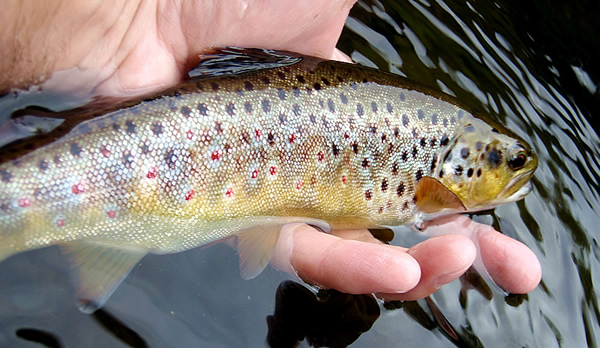
Wye Local Fisher Group – Fishing During Hot, Dry Weather
Prolonged hot and dry weather can pose a risk to some fish species. We have therefore provided this advisory note to help and support anglers to continue fishing through the summer in a way that will minimise their impact on valuable fish stocks.
Why is it important?
Prolonged warm dry weather can affect fish both in rivers and still waters. Reduced water levels combined with high water temperatures reduce the amount of dissolved oxygen in the water. Low dissolved oxygen in a river or lake often means that it takes longer for fish to recover from being caught, this is especially the case for the larger, harder fighting fish species. The combination of high water temperature and low dissolved oxygen levels can also make fish more susceptible to disease and parasite infections, so they need particularly careful handling.
Different fish species need different amounts of oxygen but, in general, for most freshwater fish the dissolved oxygen needs to be:
- above 7 mg/L for coarse fish.
- above 9 mg/L for salmon and trout.
There is no specific lower limit of dissolved oxygen levels because different fish species have different oxygen requirements. This requirement also varies with temperature, time of day and whether fish are actively migrating or in the process of spawning. Some fish species are also able to acclimatise to low dissolved oxygen or may seek out areas of higher dissolved oxygen such as weir pools. Dissolved oxygen concentrations of less than 5 mg/L are more likely to present a problem for
most species that anglers normally fish for.
It is important to remember that dissolved oxygen and water temperature are closely linked: the higher the temperature, the lower the dissolved oxygen.
Dissolved oxygen levels may also be affected by the presence of algal blooms which can significantly alter the level of dissolved oxygen levels within a water body. Algal blooms can result in high oxygen levels during daylight hours but then result in much-reduced levels of dissolved oxygen at night. Algal blooms can therefore place additional stress on fish species and angling should be avoided where significant algal blooms are observed to be present.
Different fish species can also tolerate a range of temperatures. However, the water temperature in rivers often exceeds 20°C, with several rivers exceeding 25°C. Still, waters are likely to be several degrees warmer. At these temperatures, dissolved oxygen levels are likely to be low.
What can anglers do to help?
Anglers can help protect valuable fish species and stocks during hot weather.
- You cannot easily check dissolved oxygen levels, but you can check the water temperature. River Wye temperature monitors provided by WUF in the link: https://www.fishingpassport.co.uk/river-weather-conditions provide the temperatures in the upper river at Llanstephan and lower river at Redbrook. You can also use a handheld thermometer to measure the temperature where you fish.
If river water temperature exceeds19°C by 9 am you may choose not to fish or target less sensitive species.
- If water temperatures are likely to have fallen overnight, consider fishing earlier in the morning. Keep an eye on the water temperature and be prepared to change your plans if it gets too high.
- Avoid targeting more sensitive and larger fish where water temperatures are likely to be in excess of 19°C salmon, trout, grayling and large chub, barbel and pike can be particularly vulnerable to high water temperature and lowered dissolved oxygen levels.
- Above 18°C, handle with extreme care and fish appropriately (put away the spinning rod, play fish hard
- For salmon, over 20°C there is a risk of mortality. There is a 3% chance of a fly caught fish of dying due to being caught up to 18°C, that becomes 10% at 20°C, 20% at 21°C, 40% at 22°C, 80% at 23°C. Spinner caught fish have higher initial mortality (around 10%) but followed the same curve.
- Wye salmon start to die at around 27°C, without being subject to angling pressure.
- For still water fisheries, please seek specific advice and guidance from the fishery owner or fishery manager
- Minimise your use of ground-bait. As it decomposes, this can further reduce the amount of dissolved oxygen in the water.
- Handle all fish with care, use wet hands when holding and unhooking fish. Wherever possible, keep fish in the water while unhooking and release them as soon as they have recovered.
- If you plan on taking photos, try to take them with fish still in the water.
- Avoid using keep-nets. If you choose to use a keep-net, place it in deeper water, rather than parallel to the bank. Deeper, cooler water will hold more oxygen than shallow marginal water.
- Where possible, release fish into deeper, faster flowing water, where it is safe to do so. This will hold more dissolved oxygen and speed up their recovery.
- If fish need help to recover, hold them upright and with their head facing into the current. This will allow clear, oxygenated water to flow across their gills. You can also hold fish in a landing net in the river current until they show strong signs of movement. This may take several minutes, but it is best if the fish is fully recovered before being released.
- And remember, if you see dead fish, fish in distress or gasping at the surface, please contact the Natural Resources Wales on 03000 65 3000 or Environment Agency on 0800 80 70 60 and alert the fishery owner or angling club
Thank you for your support


